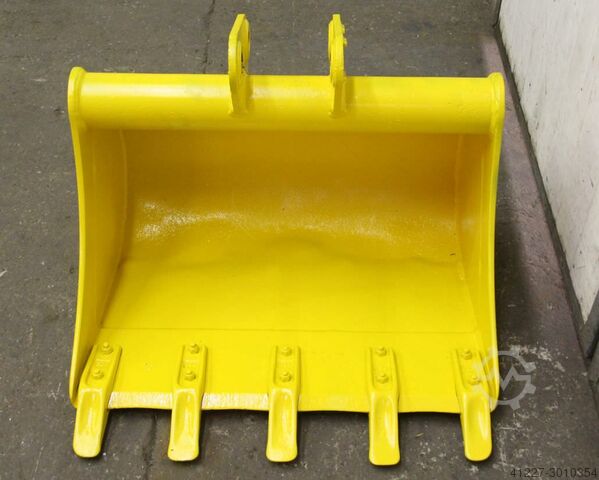Used Excavators for sale (1,176)
 Wiefelstede
Wiefelstede Pipe grab
DolezychRZ SCH Ø 100 bis 350 mm
 Wiefelstede
Wiefelstede Displacement pliers
unbekanntGreifweit: bis 400 mm
 Wiefelstede
Wiefelstede Dish spoon 50 cm
KORTEKTL5-500

+49 201 857 86 180
 Wiefelstede
Wiefelstede Pipe grab
TigripTRU 15/300
 Wiefelstede
Wiefelstede Pipe grab
unbekanntØ 350 bis 800 mm
Discover more used machines
 Wiefelstede
Wiefelstede Dredder
StahlBreite 30 cm
 Wiefelstede
Wiefelstede Excavator bucket with quick coupler
LehnhoffBreite 70 cm
 Wiefelstede
Wiefelstede Dredder
AtlasBreite 60 cm
 Wiefelstede
Wiefelstede Dredder
AtlasBreite 60 cm
 Wiefelstede
Wiefelstede Pipe grab
KRINGSDurchmesser max 150cm
 Wiefelstede
Wiefelstede Pipe grab
unbekanntØ 610 bis 900 mm
 Wiefelstede
Wiefelstede Excavator Bucket
unbekanntBreite 50 cm
 Wiefelstede
Wiefelstede Dredder
StahlBreite 45,5 cm
 Wiefelstede
Wiefelstede Excavator bucket mounting width 180 mm
StahlBreite 27,5 cm
 Wiefelstede
Wiefelstede Backhoe bucket
WeimarBreite 50 cm
 Wiefelstede
Wiefelstede Dredder
StahlBreite 57 cm
 Wiefelstede
Wiefelstede Dredder
StahlBreite 54 cm
How can I spot good Excavators?
To determine whether an excavator is in good condition, consider the following aspects:
- Visual Inspection: Check for any signs of damage like cracks, excessive wear in the tracks and bucket, and fresh paint that might be covering major body work.
- Operational Check: Test all the machine functions including moving the arm, bucket, and rotating the cab. Ensure no abnormal noises or vibrations occur during operation.
- Hydraulic System: Look for any leaks or recent repairs on hydraulic lines. Smooth operation of the hydraulics is crucial, without any delay or jerks.
- Engine Performance: Pay attention to how the engine runs. It should start easily without excessive smoke and should not make unexpected noises.
- Undercarriage: It takes a lot of wear and should be inspected thoroughly. Check the condition of rollers, sprockets, idler wheels, and track shoes for wear levels.
- Service Records: If possible, review the service records to check regular maintenance and repairs which can give clues about the overall care and condition of the machine.
Purposes and Fitting
Consider what specific tasks the excavator will be used for. Different attachments and sizes might be necessary depending on the job. Match the machine’s specifications and features with your needs to ensure it will effectively handle your projects.
Test Drive: If possible, operating the excavator yourself or having it tested by a qualified technician can provide insight into its performance and future reliability.
To determine whether an excavator is in good condition, consider the following aspects:
- Visual Inspection: Check for any signs of damage like cracks, excessive wear in the tracks and bucket, and fresh paint that might be covering major body work.
- Operational Check: Test all the machine functions including moving the arm, bucket, and rotating the cab. Ensure no abnormal noises or vibrations occur during operation.
- Hydraulic System: Look for any leaks or recent repairs on hydraulic lines. Smooth operation of the hydraulics is crucial, without any delay or jerks.
- Engine Performance: Pay attention to how the engine runs. It should start easily without excessive smoke and should not make unexpected noises.
- Undercarriage: It takes a lot of wear and should be inspected thoroughly. Check the condition of rollers, sprockets, idler wheels, and track shoes for wear levels.
- Service Records: If possible, review the service records to check regular maintenance and repairs which can give clues about the overall care and condition of the machine.
Purposes and Fitting
Consider what specific tasks the excavator will be used for. Different attachments and sizes might be necessary depending on the job. Match the machine’s specifications and features with your needs to ensure it will effectively handle your projects.
Test Drive: If possible, operating the excavator yourself or having it tested by a qualified technician can provide insight into its performance and future reliability.
 Wiefelstede
Wiefelstede Clamshell grab
AtlasE32 600 mm
 Wiefelstede
Wiefelstede Dredder
StahlBreite 60 cm
 Wiefelstede
Wiefelstede Heavy duty excavator bucket
ZeppelinBreite 85 cm
 Wiefelstede
Wiefelstede Dredder
StahlBreite 79 cm
 Wiefelstede
Wiefelstede Clamshell grab
Atlas600 mm
 Wiefelstede
Wiefelstede Clamshell grab
unbekannt695 mm
 Wiefelstede
Wiefelstede Dredder
StahlBreite 29 cm
 Wiefelstede
Wiefelstede Dredder
StahlBreite 42 cm
Used Excavators (1,176)
Search Werktuigen now with more than 200,000 used machines:
+49 201 857 86 180









































































































































































